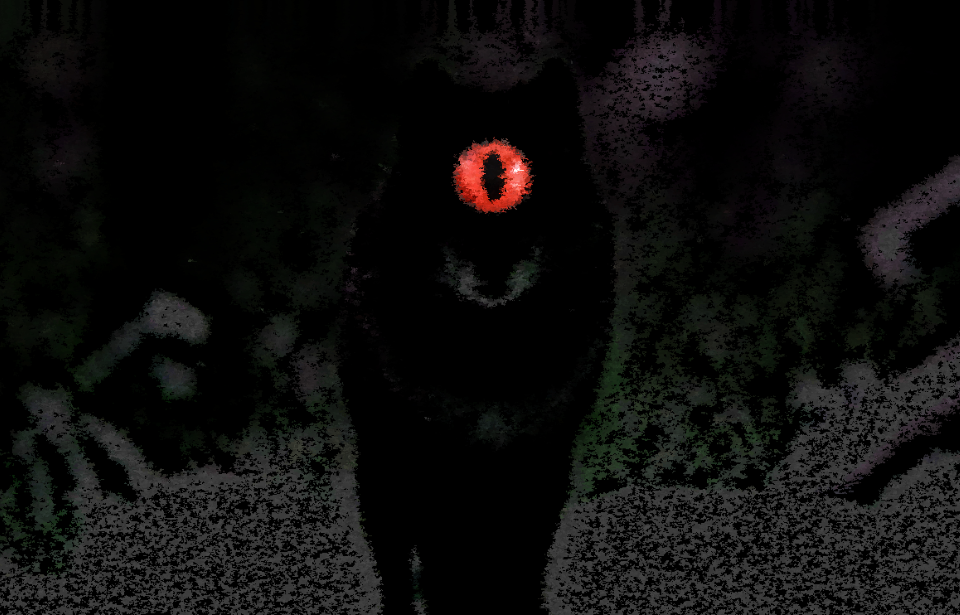For centuries, people have reported seeing a massive black dog that disappears as fast as it materializes. It is unclear why it shows itself, but many believe it means bad things are coming. With several sightings reported across Europe, it is hard to tell if the beast is real or a thing of lore. However, one thing is for certain – its legend still strikes fear into the hearts of people.
Many interpret a black dog as a sign
Dogs have long had a symbolic meaning to humans. They have been perceived as man’s best friend, loyal, benevolent, and willing to guard those around them to save them from danger. They’re also seen as dangerous creatures in their own right, sinister and malevolent, quickly turning on their master at times.
In relation to the latter, negative references, dogs have been considered bad omens, specifically, the Black Dog apparition, known as “Black Shuck.” These creatures were larger than normal dogs, sometimes as big as a horse, with black mangy fur and big, bright, shining red eyes.
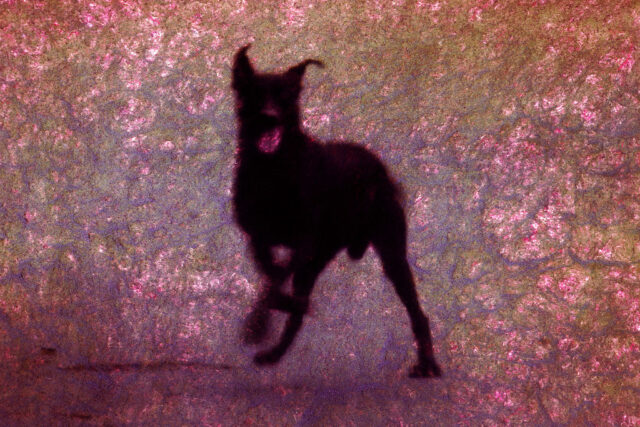
A 1901 account described the creature. “He takes the form of a huge black dog, and prowls along dark lanes and lonesome field footpaths, where, although his howling makes the hearer’s blood run cold, his footfalls make no sound… But such an encounter might bring you the worst of luck: it is even said that to meet him is to be warned that your death will occur before the end of the year. So you will do well to shut your eyes if you hear him howling; shut them even if you are uncertain whether it is the dog fiend or the voice of the wind you hear… you may perhaps doubt his existence, and, like other learned folks, tell us that his story is nothing but the old Scandinavian myth of the black hound of Odin, brought to us by the Vikings…”
In England, the folklore of the Black Dog was particularly widespread and was closely associated with electrical storms and winds from the sea. The creatures would appear out of nowhere without warning and could disappear just as quickly. If someone was unfortunate enough to see one, it could mean danger was looming just around the corner.
The first written attack of the Black Shuck
The first written account of an attack by a Black Shuck occurred in the town of Peterborough in 1127. Abbot Henry of Poitou recorded the events that occurred when he arrived at the Abbey of Peterborough, which included the spotting of multiple Black Shucks through the village.
“Many men both saw and heard a great number of huntsmen hunting. The huntsmen were black, huge and hideous, and rode on black horses and on black he-goats and their hounds were jet black with eyes like saucers and horrible. This was seen in the very deer park of the town of Peterborough and in all the woods that stretch from that same town to Stamford, and in the night the monks heard them sounding and winding their horns,” he described.
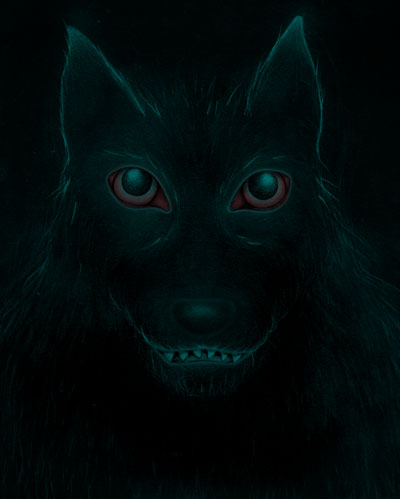
In this instance, 20 to 30 dogs were believed to be seen in the time between Lent and Easter, about 50 days. The sightings were thought to be a “wild hunt” that transcended the borders of England, as there were records of Black Shuck sightings throughout the rest of Europe. Wild hunts were associated with the changing seasons, specifically, fall to winter, and the Black Shuck sightings may have been a means to warn people to stay inside to survive the cold weather as it blew in. If they didn’t stay indoors, they could be killed by the Black Shuck, symbolic of freezing to death.
Attack on the Blythburgh church
The most popular and well-known record of a Black Shuck dates back to 1577 at the Holy Trinity Church in Blythburgh, England. Legend claims that it arrived during a horrific storm, crashing through the doors at the exact moment that lightning cracked through the sky. It attacked the people in the parish, supposedly killing two while they were praying. Reverend Abraham Fleming of Bungay wrote an account, explaining the events in detail.

“This black dog, or the divel in such a linenesse (God hee knoweth al who worketh all,) running all along down the body of the church with great swiftnesse, and incredible haste, among the people, in a visible fourm and shape, passed between two persons, as they were kneeling uppon their knees, and occupied in prayer as it seemed, wrung the necks of them bothe at one instant clene backward, in somuch that even at a moment where they kneeled, they strangely dyed,” he described.
Scorch marks, believed to have been left there by the Black Shuck as it crashed into the church, are still visible on the north door today. Additionally, the church’s steeple collapsed. The tale has resonated with the people of the village for a long time, with locals continuing to report seeing the Black Shuck over the years.
More accounts of the Black Shuck
There have been several more accounts of Black Dog sightings throughout the centuries, including far more recent accounts. In 1890, a milkman from Aylesbury spotted a Black Dog every time he tried to take the shorter path to his cow field. After being blocked from the shorter path for a while, he was finally accompanied by a friend to the spot, where he finally found the courage to try and move the dog from the path.
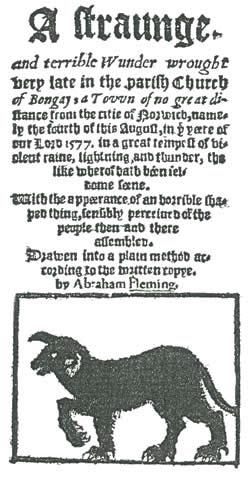
Using the pole he used to carry his milk buckets home, he struck the creature. It disappeared immediately, but the milkman became paralyzed and senseless. He had to be carried home, and remained speechless for the rest of his life.
During the Second World War, a four-year-old believed she had seen a massive Black Dog walk into her bedroom, skulk around her bed, hold her gaze with its massive red eyes, and then vanish as it approached the door to her room.
Additionally, in 1972, the Eastern Daily Press reported that an on-duty coastguard officer witnessed a strange black dog while he scanned the beach. According to the reports, he said, “Looking to the north at about 4.45am, at daybreak, on Wednesday last, April 19th, I saw a large, black hound-type dog on the beach, about a quarter of a mile north of the lookout. What made me look was that the dog was running, then stopping, as if looking for someone.
“I watched it for one to two minutes and then it vanished before my eyes. I kept on looking for a time but it did not reappear.” He further reported that the beach had recently been razed, so there was nowhere for a large dog to hide.
Reasons for the sightings
While the sightings may seem random, some of them do coincide with other things occurring in those same places. For instance, during the attack at Holy Trinity Church in 1577, the area was experiencing one of the worst thunderstorms ever recorded in the area.
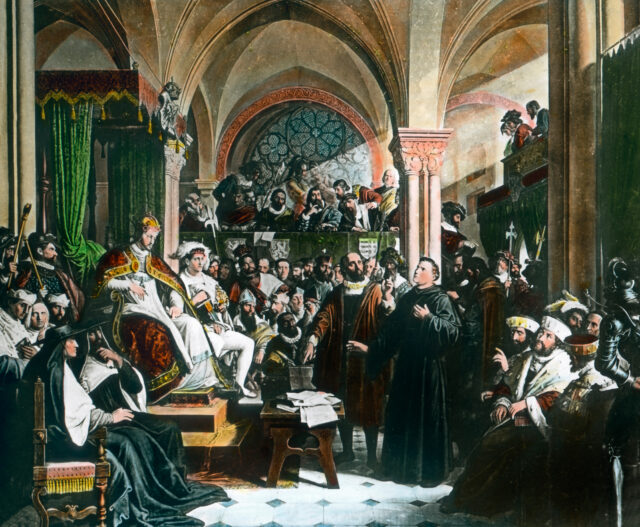
The storm could have very well been the thing that “attacked” the church that evening, and the destruction it caused could have resulted in the deaths of those two people. However, instead of taking it as a force of nature, the people of the parish understood it as the work of the devil – a Black Dog sent to harm them.
Some people believe that the Black Shuck folklore really began to resonate with people during the Reformation that occurred during the 16th century. As the religious movement threatened the Catholic Church, some believe they told these tales to try and scare people into staying inside their churches. Others say that the Black Shuck is merely a means to keep children safe from harm, including preventing them from staying out too late and teaching them to avoid stray dogs.
A skeleton was found that may lend credibility to the legend
In 2013, the legend of the Black Shuck was brought into the 21st century as a man in Leiston claimed to have unearthed the skeleton of a large Black Dog near an abbey located there. The skeleton was said to have measured seven feet long, meaning that the creature it belonged to could have weighed 200 pounds.

While many suggested that it was simply the carcass of a big dog breed, such as a Great Dane or an Irish Wolfhound, others still believe it indeed belonged to a Black Shuck.
More from us: Why the Navajo Skinwalker is the Most Terrifying Native American Legend
We may never know if the legend of the Black Dog is true, but for centuries, people have claimed that the terrifying creature has crossed their paths. Many of them believed with all their hearts that the hellish beast was real.
